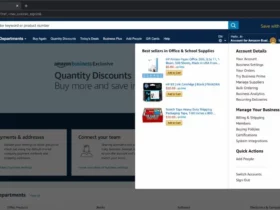It is no secret that marketing and sales in their broadest sense, are the basis of every business of the modern age.
The client or customer is your goal, so the strategy for attracting them is the first and basic step you need to take.
In internet marketing, which is certainly the most effective way to sell your product (whatever it may be) or bring it closer to potential clients/customers, lead generation and prospecting are your strongest allies.
With a well-designed generation strategy, visitors interested in your business product, or service very quickly become secure customers and clients.
We bring you some of the important rules for starting your professional and profitable marketing business.
In the beginning – what are lead generation and prospecting?
Lead generation and prospecting have almost the same meaning in internet marketing. Both terms imply designing the target group of customers/clients, finding them, attracting them, and last but not least – turning them into customers, which is your main goal.
However, there is one significant difference.
Namely, lead generation uses inbound and outbound marketing as a strategy, while prospecting uses only outbound marketing.
In this sense, lead generation has a slight advantage over prospecting and it is a step further about the client/customer, but first, the differences and characteristics of inbound and outbound marketing need to be explained.
Inbound Marketing
This strategy includes optimized searching, blogging, social media usage and customization of communication depending on the social media used, sending emails to a voluntary contact list, and PPC advertising.
This type of strategy focuses on content marketing to inform your visitors/followers in more detail about your product or service. In short, this is a kind of organic gathering of potential buyers/clients.
Outbound Marketing
It includes cold calling, search engine advertising, media advertising, social media advertising, and mail to a paid contact list.
This strategy is easier than the previous one, because it does not require much effort, but it requires payment and it represents a much higher cost when it comes to the initial contact list.
The people you contact have not previously expressed interest in your service, you have paid for a contact list of a specific target group, but they probably do not know who you are, so they will almost certainly not be interested in your emails or calls.
The opportunity to get feedback is much less compared to inbound marketing.
Lead Generation VS Prospecting
Lead generation is a useful strategy for developing a personalized relationship with customers/clients.
To begin with, your content collects data from relevant visitors to your site or social media, or in some specific circumstances (for example, when you are in the company of people with similar interests as you or your company).
The data includes the name of the visitor, e-mail address, company name, etc.
You can get this information by having a visitor leave it on your site, subscribe to the newsletter, leave a comment and ask for information through your social media, or by simply asking for an email from people you think belong to your target audience.
The person you gain in this way is called a lead, and your product/service is a lead magnet in that case.
This strategy requires more time and effort. The main methods of lead generation strategy are content marketing like blogs, e-books, etc, which will educate the audience about your service or product.
Lead generation is mostly used in internet marketing where sales are certainly the ultimate goal, but where the big task is also maintaining relationships with customers/clients.
Lead generation relies more on this way of communication because it is more personal, communicates more, and gets feedback from the visitor or customer because it is assumed that he is already informed about your business.
Prospecting first requires you to identify the target group and the ideal customer/client, by elaborating on its characteristics (purchasing power, profession, etc.).
The next step is to actively search for customers/clients, which is usually done by purchasing a mailing list, through lead generation directories or email finders, using the cold calling method, or starting communication via the Linkedin platform.
Once you have a list of contacts, it remains to adjust the communication according to your assessment of the ideal customer/client and make sure that the communication is less formal, not intrusive and give the impression that you want to help and provide a solution according to what is your product/service.
The point and also the main disadvantage of this strategy is that your chosen customers/clients probably do not know who you are, so it is harder to reach the goal and to attract them. Prospecting is mainly used in case of a short period in which you need to start offering your product/service.
The ultimate goal of prospecting is sales, so it is more tailored for the sales team.
Lead Generation & Prospecting
It is best to combine these two strategies and in that way to get the results you want.
Marketing and sales are closely related areas that need to work together: the sales strategy should be tailored to the target group of customers/clients and their needs and characteristics, and marketing strategies should retain the attention and trust of potential customers/clients, inform them in detail and establish a confidential relationship.
You can also check B2B lead generation tools to help you streamline and automate your lead generation process. These tools include customer relationship management (CRM) software, email marketing software, social media management tools, landing page builders, and more.
According to some research, companies or smaller companies combining lead generation and prospecting are as much as 67% more successful in business.
Important steps in lead generation and prospecting strategies:
- Prospecting: identify the ideal customer/client, with all his features and characteristics – who may be interested in your product, what are his characteristics, what he does, what is his financial situation, where he lives, etc.
- Determine the list of contacts based on previously profiled customers/clients (people) and adjust the way of communication in emails or calls accordingly
- Lead magnet: on your site / social networks, the offer must be clear, interesting, informative, with a clear result that the potential buyer/client will achieve if he is in your favor
- Call to action: an interesting, witty, and effective call that motivates a potential customer to address you
- Opt-in form: a form that must exist on your site for customers/clients to leave the necessary information about themselves (usually name and email address)
- Landing page: a page where the customer/client can find out about your offer, which means that the landing page promotes what you offer
- Thank you page: a page that informs the buyer/client that they will receive the offer by email or receive it directly, and in this way, you will thank the buyer/client for the trust. This page should offer more relevant content that would attract the buyer/client.













